Entering the 2015-16 NHL season, Winnipeg Jets’ general manager Kevin Cheveldayoff had two pending unrestricted free-agents with their hands out for long-term contracts — Andrew Ladd and Dustin Byfuglien — and money in his pocket to please only one.
We all know how it turned out. Cheveldayoff chose to re-up his big defenseman and part with his captain, shipping him to the Chicago Blackhawks along with AHLers Jay Harrison and Matt Fraser for Marko Dano and a first-round pick.

The Ladd deal — now more than two years old — has proven to be a positive and a key moment in Jets’ history. It’s not because the players the club received from the Blackhawks lit the world on fire, but rather because of the positive ripple effects the trade had on the Jets’ past and present— It shaped who they are today, and will continue to shape the future.
Much of what the Jets have been able to do in the past two years — and much of what they’ll need to do after the 2018-19 season — would not have been possible without trading Ladd.
Related – Jets ‘Paint the Rink’: The Fans Want the Cup
Ladd Versus Byfuglien Debate Was Fiery
Hindsight is 20-20. It’s obvious now, two full seasons since the trade, Byfuglien has been the more productive player. Back in 2015-16, however, who the Jets would re-sign and who they would send to new pastures was far from a given.
Discussion between fans, media, and pundits, who weighed the pros and cons of keeping the hardworking power-forward over the hulking d-man and vice-versa, was hot before the season even began. It was a debate more divisive than Coke versus Pepsi or pineapple on pizza.
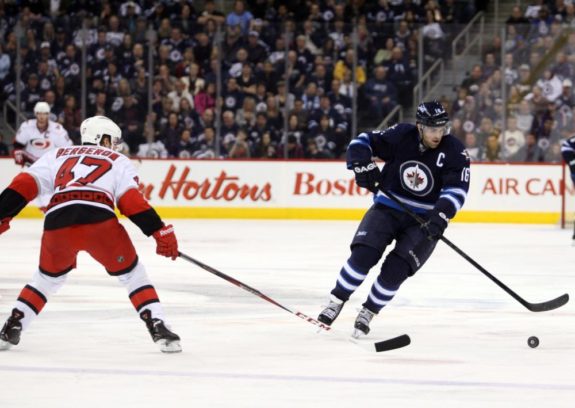
Proponents of Ladd pointed to his many positive attributes, such as his durability, leadership, and history of steady production. He produced a career-high 62 points in 2014-15, averaged .73 points per game with the Atlanta/Winnipeg franchise, and missed just five regular season games.
“No player in the Jets organization has played a more important role in the franchise’s transition from Georgia to Manitoba than Ladd,” the Winnipeg Free Press’ Ed Tait wrote in a detailed piece weighing the positives and negatives of each player. “He was the player a new ownership group/management team leaned on most as they went from running an AHL team to an NHL operation.”
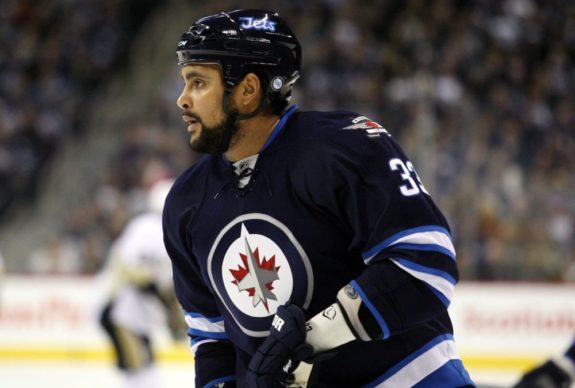
Proponents of Byfuglien, on the other hand, pointed to his unique play style, multi-faceted ability to change the course of a game, and physical prowess.
“He’s big enough to play on an offensive line and quick enough to be a power forward in the NBA,” Tait wrote in the same article. “Yes, combine those two attributes and then stuff a 6-5, 265-pounds-plus man into a hockey uniform and what the Jets get is a force of nature on the ice.”
The potential downsides of retaining each player long term only added more fuel to the already raging debate. Some were worried the return on investment for Ladd would diminish as he crept toward his 30th birthday. Others were more worried that Byfuglien’s penchant to pinch and abandon his blue-line brethren would make him more of a liability than an asset. The year prior, some sportswriters even called for Cheveldayoff to send Byfuglien packing for those very reasons.
Jets & Ladd Couldn’t Strike a Deal
It’s tough to encapsulate the magnitude of Ladd versus Byfuglien discussions. It was top news for months, with every fact of each player’s game being put under multitudes of microscopes. Another man under a microscope was Cheveldayoff. He knew, regardless of the choice he made, he was likely to lose a key cog and anger a good portion of the Jets’ passionate fan base. However, he did his due diligence and tried to get his captain to sign the bottom line of a lucrative new contract.
Cheveldayoff and Ladd entered negotiations early in the summer, with both sides saying they wanted to sign an extension. Three months later, though, as summer turned to fall, there’d been little progress. Gary Lawless reported in early October that contract talks had stagnated. While both sides agreed that a six-year term was suitable, Lawless said there was a $4-million gap between what Cheveldayoff offered and what Ladd desired.
Cheveldayoff tried to build a bridge to span that gap, but Ladd wouldn’t help him do so. He rejected a six-year deal worth $6 million annually, believing he was worth more. Cheveldayoff, sensing the Ladd talks were going nowhere, shifted his focus to Byfuglien and reached a five-year, $38-million agreement with him in early February. That essentially eliminated by proxy any chance Ladd would be donning a Jets’ sweater for much longer.
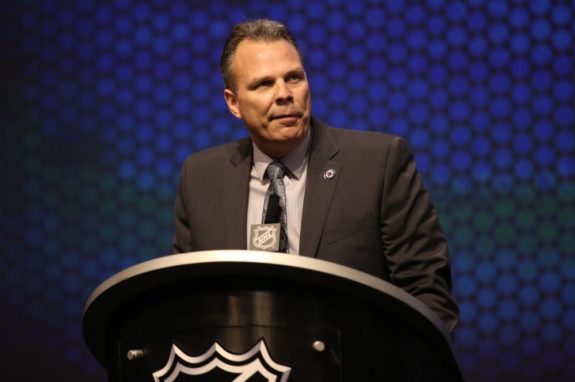
As the Feb. 29 trade deadline loomed, Ladd said there hadn’t been much in the way of contract talk since Christmas. On Feb. 23, prior to the game everyone knew could be his last as a Jet, he said his conversations with Cheveldayoff had a “weird vibe.”
Three days later, Cheveldayoff pulled the trigger, sending him back to the team that traded him to Atlanta six seasons earlier.
Reaction to Ladd’s Departure Was Visceral
The move was met with sadness from teammates who lamented losing their beloved leader. Many Jets players praised him for being a skilled player, consummate professional, and quality person.
since #nhljets returned, Andrew Ladd is first or second in goals, points, hits, games played, shifts, GWG. Been a massive part of this team
— gary lawless (@garylawless) February 23, 2016
Ladd was loved in Winnipeg. He embraced the city with open arms and was quite involved in the community. In the summer prior the the Jets’ inaugural season, when discourse was swirling as to whether Winnipeg was ready for the big leagues, he signed a five-year deal that showed he was committed to pushing the new franchise forward. He even took a trip to Winnipeg a month before signing that deal to check out the city, which he paid for out of his own pocket.
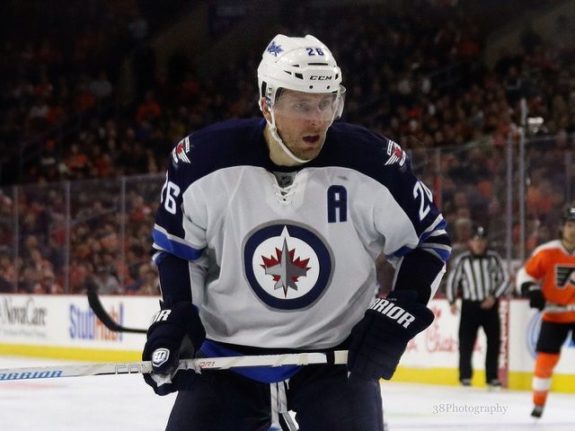
“It leaves a huge void in our room, in our lineup, in a lot of different ways,” Blake Wheeler, who would later replace Ladd as captain, said. “I looked up to him a lot with what it took to get my game to the next level, to be a leader. I owe a lot to Laddie.”
“It’s tough,” an emotional Mark Scheifele said. “He was a pretty big role model for me, helped me with just about anything you could ask. He was always there for me. It was an honour to play with him.”
Who Won the Trade?
It’s usually the first question anyone asks when analyzing a past transaction. It’s perhaps unfair to say the Jets “won” the trade, but it’s clear the Jets have benefitted more from the trade than the Blackhawks have.
It’s not thanks to the players they received for Ladd. Dano had a rough start to the season and was never able to get out of head coach Paul Maurice’s doghouse. He was banished to the press box and spent more time in a suit than on the ice, playing just 23 games and amassing three points. Logan Stanley, who the Jets chose with Chicago’s 2016 first-round pick, is still in juniors.
Rather, it’s thanks to the trade’s positive ripple effects that will continue into the future. In fact, they unloaded Ladd at just the right time.
Ladd Not the Player He Once Was
Ladd finished the 2015-16 season with the Blackhawks, tallying 12 points in 19 games and two points in the playoffs. The team failed to make a deep run, falling in their first round matchup with the St. Louis Blues. Ladd turned out to be rental and hit the market as an unrestricted free agent.
On July 1, the New York Islanders showed Ladd the money, inking him to a seven year, $38.5-million deal — a big contract, but actually worth less than what Cheveldayoff offered just a few months before.
Ladd has been awful over the last two seasons in Long Island. He got off to an ice-cold start 2016-17, going goalless in his first 13 games and ending the season with just 31 points. His production dropped even more in 2017-18. He had just 29 points — his lowest full-season total since the 2006-07 season — for a team that finished 17 points out of a playoff spot.
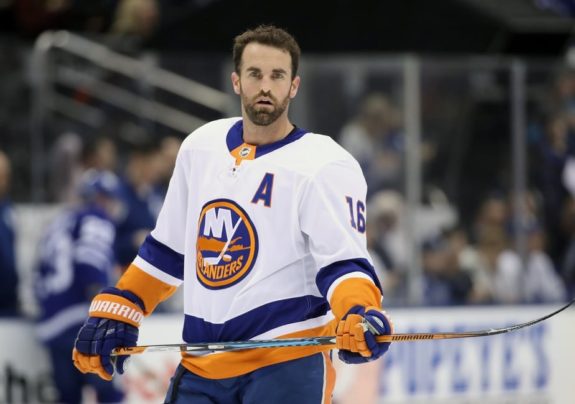
Ladd’s contract is worth $5.5 million per year, which means he got paid just over $177,000 per point in 2016-17 and nearly $190,000 per point in 2017-18. To say Ladd’s contract is an albatross around the neck of the Islanders’ organization is an understatement — it’s the NHL’s worst, bar none.
Because the #Isles aren't starved for goals, this has gone fairly unnoticed – Andrew Ladd has 0 goals and 5 assists in his last 17 games. He hasn't scored since before Christmas (12/21/17).
There are 5 more years left on his contract.
— 𝐈𝐬𝐥𝐞𝐬 𝐅𝐢𝐱 (@IslesFix) February 21, 2018
The Jets have players who draw comparable salaries but produce double the points. Mark Scheifele makes a hair over $6 million annually and tallied 60 points in 60 games this year. Nikolaj Ehlers makes $6 million a year and also put up an even 60.
Trade Showed Commitment to Jets’ Youth Movement
It was quite telling that the Jets opted to trade Ladd along with Harrison and Fraser rather than with a top young prospects.
It meant the Jets didn’t get a player who could immediately boost a playoff push. Dano came with draft pedigree and had shown some goal scoring flash the year prior with the Columbus Blue Jackets and that year with the Springfield Falcons and Rockford IceHogs. While he didn’t embarrass himself in 21 games down the stretch for the Jets — posting eight points — he wasn’t a guy that would, or was expected to, strap the team to his back and lead them to the playoffs. As mentioned before, he’s struggled mightily since and likely isn’t in the Jets’ plans going forward.
The Jets missed the playoffs by nine points in 2015-16 despite qualifying the year before. To many, that looked like regression, but it was really continued progression of Cheveldayoff’s patient “draft and develop” strategy — one which meant short-term pain for long-term gain.
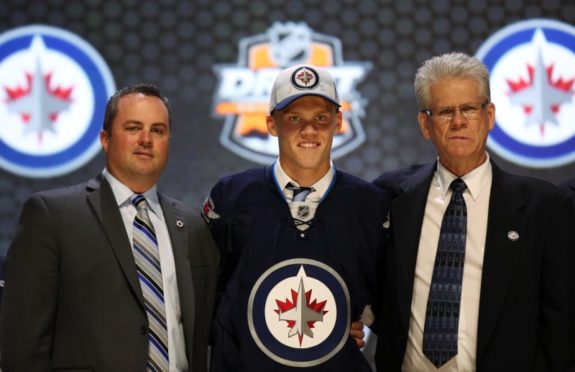
While many fans hoped the Jets were ready to contend in the wake of the 2014-15 playoff berth, the Ladd trade communicated more time was needed. When the Jets made the playoffs that year, they were a two-line team and didn’t have nearly the depth or balanced offensive attack they have now.
Cheveldayoff didn’t want to build a team that could make the playoffs but would exit early. He wanted to build an elite squad that would be a legitimate Cup threat for a number of years — even if that meant fans would have to wait a bit longer to bring back the whiteout.
Ladd Trade Led to Byfuglien’s Resurgence
What scene pops into your mind when you hear the name Dustin Byfuglien? Is it him plucking Tomas Nosek and Colin Miller out a big scrum like an on-ice bouncer? Is it him sending Mark Stone into next month with a hellacious hit? Or is it him unleashing one of his signature slap shots from the point?
If the first scene is to one of him getting caught on a bad pinch and leaving his d-partner out to lunch, it speaks about just how far Byfuglien’s game has come since the Ladd trade.
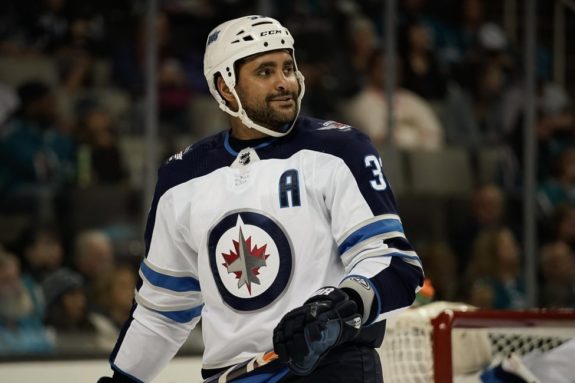
In years past, the pressure was on Byfuglien to produce points. Now, with the Jets’ dynamic offense, Byfuglien’s been able to focus on doing things right defensively and pick his spots more selectively. His recommitment to the defensive zone has led to fewer risky plays and fewer frustrated fans. He’s playing some of the best hockey of his career.
His improved defence hasn’t hampered his ability to impact a game with a big hit or big goal. That was never more apparent than during the 2018 playoffs. There’s no other player like Big Buff in the NHL.
Related: Byfuglien’s Been a Playoff Beast
On the other hand, there’s plenty of overpaid, underperforming players just like Ladd.
In his piece “Big Buff a giant among men,”sportswriter Jason Bell summed up Byfuglien’s play this way.
A fluid skater, offensively talented, loaded with brute strength, with a deep love for the game and unwavering loyalty to his coaches and teammates, he’s demonstrated all the positive Big Buff do’s during the Stanley Cup playoffs and none of the don’ts that made him a lightning rod in his first six season in Winnipeg.
Trade Gives Jets Future Financial Freedom
The Jets have plenty of work to do this summer regarding contract extensions. Connor Hellebuyck, Jacob Trouba, Josh Morrissey, Joel Armia, Brandon Tanev, and Adam Lowry all need new deals. You know they’d love to find the cash to retain Paul Statsny too.
Next summer, they will have even more work to do. Young stars Kyle Connor and Patrik Laine will be looking for handsome pay increases as their entry-level contracts come to an end.
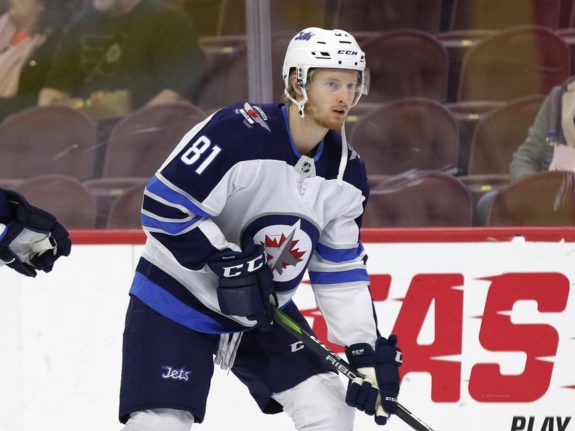
Connor is likely going to get at least as much as Scheifele and Ehlers. Laine might be looking for ‘McDavid money.’
Staying cap-compliant while satisfying all these players’ demands will be a challenge. If the Jets were beholden to Ladd — and paying $6 million to someone who’s proven past his prime — it’d be straight-up impossible.
In retrospect, it’s a good thing Ladd rejected Cheveldayoff’s six-year, $36-million offer, because that would have been a bad investment and kneecapped what the Jets could do this and next summer.
Andrew Ladd was the leader of the Jets for their first half-decade since relocation, one of the first to buy into the city, and a consistent producer. Winnipeg owes him a big thanks. Looking back, however, the positives that came from trading Ladd far outweigh the negatives. It has been, is, and will be a great move for the team.